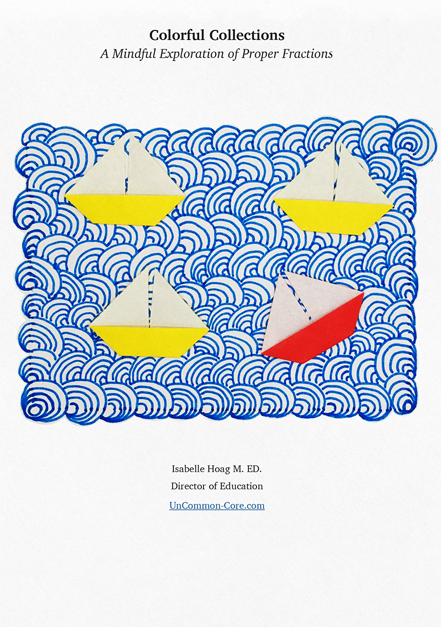Welcome to Uncommon Core
Make math sticky ~ use these creative, original printables and activities to grab your students’ imaginations.
What will your students put in the pocket? Everyone will enjoy folding this super simple origami heart. Then they will enjoy finding or making some Valentine treasures to fill the pocket. Click the button above to download instantly. Video demonstration is available on the UnCommon Core Youtube Channel. Other Ideas for Folding Valentines Why not fold your valentines from kite paper and hang them in the window? After folding a valentine, open the paper to see the angles in the crease pattern. Fold other origami hearts like this one designed in two tones. Why not fold some origami rebus puzzles for your Valentine? This is the ultimate origami heart to fold and share! I hope you enjoy folding this super simple origami heart - as much as you enjoy filling the pocket with Valentine treats.
Crafty Multiplication Activities Download a free copy of the handout used in the 2024 MEA conference workshop Art of Multiplication: Crafty Multiplication Activities.
Students who use scaled number lines to multiply learn to think of multiplication in terms of lengthening the distance between numbers on one number line in order to compare them with numbers on the regular (Times One) number line. The distance that the new number line is stretched, or scaled, corresponds with the multiplier (the number by which the multiplicand will be multiplied).
Students can make Rioting Rectangle artwork or Restful, Relaxing Rectangle artwork. Either way, they get to find all the factor pairs for numbers up to 100, draw rectangles to represent each factor pair, and make artwork with rectangles that all have the same area.
Thinking about what works in education and how to make math sticky.
Many students struggle when it comes to placing fractions on the number line. Once they understand the concept, they need loads of practice. Students need the kind of practice that gets more challenging as they get more proficient at the task. This interactive slideshow is for students who are familiar with the concepts of proper fractions, how to place fractions on number lines, equivalent fractions, and unit fractions.
Is it possible to use skip counting to multiply fractions with whole numbers? Yes! Let your students skip count to multiply fractions with whole numbers. It's a great way to introduce multiplication with fractions.
My guess is that most of us employ evidenced based techniques when we teach and would like to stay up-to-date when it comes to learning about new research and testing those ideas in our classrooms. With this in mind, here is a list of strategies proven to be effective in education.
Call it anything you want: Two Truths and a Fib, or Facts and a Falsehood, the math version of this game is just as fun as the original. Students will love to practice math facts with Two Facts and a FAKE. Keep your entire class engaged playing this fast paced, find the facts, fix the fraud type game.
Download Colorful Collections:
A Mindful Exploration of Proper Fractions
Help your students make sense of fractions.
I started teaching in 1987, which means I’ve collected many tips and tricks along the way. In this ebook, I share concepts, strategies, and classroom materials to help you make math sticky.
Along with this useful ebook, you will receive weekly emails from StickyMath@UnCommon-Core.com. I send information like: teacher tips, educational ideas, book reviews, curated lists, reviews of educational sites, and free first drafts of products that I’m creating for my TPT store. That way, you get helpful ideas and free stuff, while I get some feedback before I finalize products and put them up for sale.
I value your privacy. I will never sell your information. You may unsubscribe at any time.
All the best!
Isabelle
Isabelle Hoag M. Ed.

